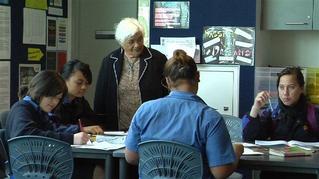Interesting information that I found was from an article: Improving English Language and Computer Literacy Skills in an Adult Refugee Program. by Henriette Janse Van Rensburg.
She speaks about ways of improving English language and computer literacy skills of adult refugees in Australia. The main teaching strategies used for this group were repetition, content and language integrated learning (CLIL) and computer-assisted language learning (CALL).
They used the computer as an educational tool and Web-based language learning (WBLL) activities. These adults had minimal schooling and arrived with little or no literacy in either a first or second language and had no exposure to computers.
They were excited about using the computer yet had no idea how to use the computer.
These adult first did a pre-test about labeling the parts of the computer and then went to the introduction of computers by means of learning new terminology about computers, how to turn on the computer and the function of the keys on the keyboard.
Initially they found it difficult to type the given Web addresses, but after mastering that, they found looking at pictures very fascinating and could then associate it to the prior knowledge. They even mastered puzzle building using the web. Van Rensburg (2010) states “It should be important to keep purposes, content and target population in mind when selecting a suitable and appropriate CALL activity”.
They were asked to list topics or keywords of things they were interested in and the pictures they found on the web reflected the images that were uppermost in their minds. Because they carried cultural baggage from the trauma that they experienced in the past, they always returned to the images that captured malnourishment of children and adults.
A post test was done after a number of weeks and Van Rensburg argued that “the exposure to and immersion in the language program have improved the participants' English language proficiency” and the computer, as an educational tool, was successfully used. Adult learners were actively engaged in the online activities and they could relate to the purpose of learning. Van Rensburg could see an improvement of literacy and computer skills over the short period of time and states that “future opportunities have been created and confidence and dignity have been restored”.
REFERENCE:
Van Rensburg, H.Janse. (2010). Improving English Language and Computer Literacy Skills in an Adult Refugee Program. International journal of pedagogies and learning. 6(1), 69-81.
